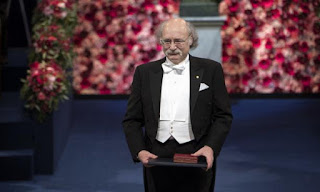Sometimes I never get around to writing or finishing planned blog posts. Last month something changed, but nothing changed for me. None of this is covid-related.
Three years ago I negotiated with my university a "transition to retirement" contract. These seem to be designed by the accountants to incentivize "highly paid old farts" to retire (regardless of whether they have anything to contribute) and make the university "financially sustainable". I got to go half-time for three years with no teaching and administrative responsibilities. (BTW. I actually love teaching. I just don't enjoy it or see the point when it becomes bureaucratic and/or students are disengaged.) Pretty strong incentive!
I did this for a multitude of reasons: mental health, other opportunities and priorities, an unwillingness to take on administrative roles that seem to be mostly implementing dubious management decisions, and general concerns about where Australian universities are heading...(money, management, marketing, and metrics)... Taking long service leave helped clarify things. Since then the wisdom of decision for me personally has only been confirmed, particularly with covid and some family health issues. I could not imagine that I would have coped with having to teach online with two weeks notice. I admire those of you who have done it... And then there are other things in the background such as an opinion piece in The Wall Street Journal and associated submissions to a recent parliamentary inquiry...
At end of February, the three years came to an end and I officially "retired" and became an Emeritus Professor. My wife says I have not "retired" but just changed to new responsibilities and income streams. I agree.
I am 60. I consider myself very blessed and privileged that I am able to do this. Not everyone has this freedom. I had about 25 years in Australian universities and most of it was as "research faculty" and I was generously funded and so got to work with many excellent postdocs.
In the short term very little has changed (besides the paychecks). I still have an office, am finishing Condensed Matter Physics: A Very Short Introduction, and collaborating with Ben Powell's group on spin-crossover materials, and trying to write more blog posts. I think some of this work is the nicest I have been involved with. I also work half-time as a consultant for a Christian NGO on a project that combines some of my passions and concerns: science, theology, Jesus, and the Majority World. Again I feel privileged to have that opportunity.
I am hardly "a man of leisure," contrary to what one of my wife's friends said last week.
So what about this blog? I have no immediate plans to change anything. I would like to post more often but always seem too "busy" or spend too much time polishing posts...








